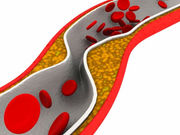Risk of major adverse cardiovascular events up for DAPT disruption, regardless of diabetes status
WEDNESDAY, March 29, 2017 (HealthDay News) — For patients undergoing dual antiplatelet therapy (DAPT) after percutaneous coronary intervention with a drug-eluting stent (DES), DAPT cessation is significantly lower in patients with diabetes mellitus (DM), according to a study published in the March 27 issue of JACC: Cardiovascular Interventions.
Michela Faggioni, M.D., from Mount Sinai Medical Center in New York City, and colleagues identified 1,430 patients with DM and 2,777 without DM treated with DES after percutaneous coronary intervention. The authors examined temporal variability in the risk of major adverse cardiovascular events (MACE) in relation to DAPT cessation patterns.
The researchers found that DM correlated with increased risk of thrombotic events during two-year follow-up, but with a similar risk of bleeding. Patients with versus without DM had significantly lower cumulative incidence of DAPT cessation (50.1 versus 55.4 percent; P < 0.01), which was mainly driven by less frequent physician-guided discontinuation beyond one year. The groups had similar two-year rates of interruption and disruption. Interruption or discontinuation of DAPT under physician guidance correlated with no change in the risk of MACE compared to DM patients on uninterrupted DAPT. Compared with uninterrupted DAPT, disruption was associated with increased risk of MACE, regardless of the diabetic status.
“DAPT cessation patterns vary according to diabetic status, with less frequent physician-guided discontinuation among patients with DM,” the authors write.
Several authors disclosed financial ties to the pharmaceutical industry.
Copyright © 2017 HealthDay. All rights reserved.








